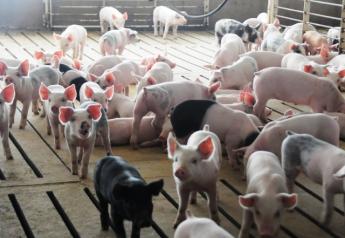Experts Examine Risk of Bacteria Spillover from Wild Animals to the U.S. Swine Herd

What's the risk of bacteria spillover from North American wild mammal species into the U.S. swine herd? Bacteria account for a high degree of morbidity and mortality in swine, causing huge losses to the swine industry and zoonotic risks. Because domestic pigs often acquire these pathogens (either directly or indirectly) from wild animals, there's a need for assessments such as these to prioritize bacteria species for targeted prevention strategies, says Paul Sundberg, DVM, executive director of the Swine Health Information Center (SHIC).
An ongoing collaboration between SHIC and the Center for the Ecology of Infectious Diseases at the University of Georgia is examining this risk and will result in enhanced information needed to prevent, prepare and respond to emerging diseases and their potential impact on swine health, welfare and market.
In the first phase of the project, researchers identified 102 bacteria species hosted by 127 North American wild mammal species that have a greater than or equal to 97.1% chance of associating with domestic pigs. These bacteria species were assigned a propensity score based on their predicted ability of spilling over from their wild mammal hosts into domestic swine. A classification of either “novel” or “known” was also assigned based on whether or not these species had a known association with pigs documented in scientific literature, SHIC reports.
Subject matter experts were surveyed in the second phase of the project. The goal was to rank the 102 bacteria species to assess their potential impact on the swine industry via potential effects on public health, antimicrobial resistance and swine welfare, production, morbidity and mortality. A limited number of industry professionals completed the survey and identified 16 bacteria species as being of high impact to the swine industry, four of which are not yet known to infect domestic swine: Anaplasma bovis (98.7% modeled chance of spilling over into swine), Clostridium botulinum (98.7%), Klebsiella pneumoniae (98.6%), and Yersinia pestis (99.7%).
Additionally, SHIC reports seven bacteria were ranked as having a high-risk of antimicrobial resistance and five bacteria were ranked as having a high human outbreak potential. Results of the analysis uncovered two novel bacteria that are found in pigs, which helps validate the predictive model.
"Industry professionals across disciplines hold valuable insights crucial to informing risks related to emerging diseases. Their collective knowledge based on years of expertise fills a gap in the absence of a comprehensive database on the pathogenicity of swine-associated bacteria. A lack of published academic literature also fuels the need to engage subject matter experts to develop a systematic process for identifying bacterial species of concern to the swine industry, and this research represents a summary of such an endeavor," Sundberg says.
Because of the limited response to the survey, more responses are being sought after. Other upcoming activities include continued work to investigate pathways for potential spillover events, such as shared habitats between wildlife and domestic swine or pathogen overlap. Additionally, different bacterial strains, serovars and variants of bacteria species of concern must be closely examined to increase predictive power, SHIC reports.
More from Farm Journal's PORK:
An ASF Vaccine Status in Vietnam Update
U.S. Pork Exports Top Year-Ago Totals for First Time in 2022
Newly Identified Swine Disease in Ecuador Under SHIC's Watchful Eye







